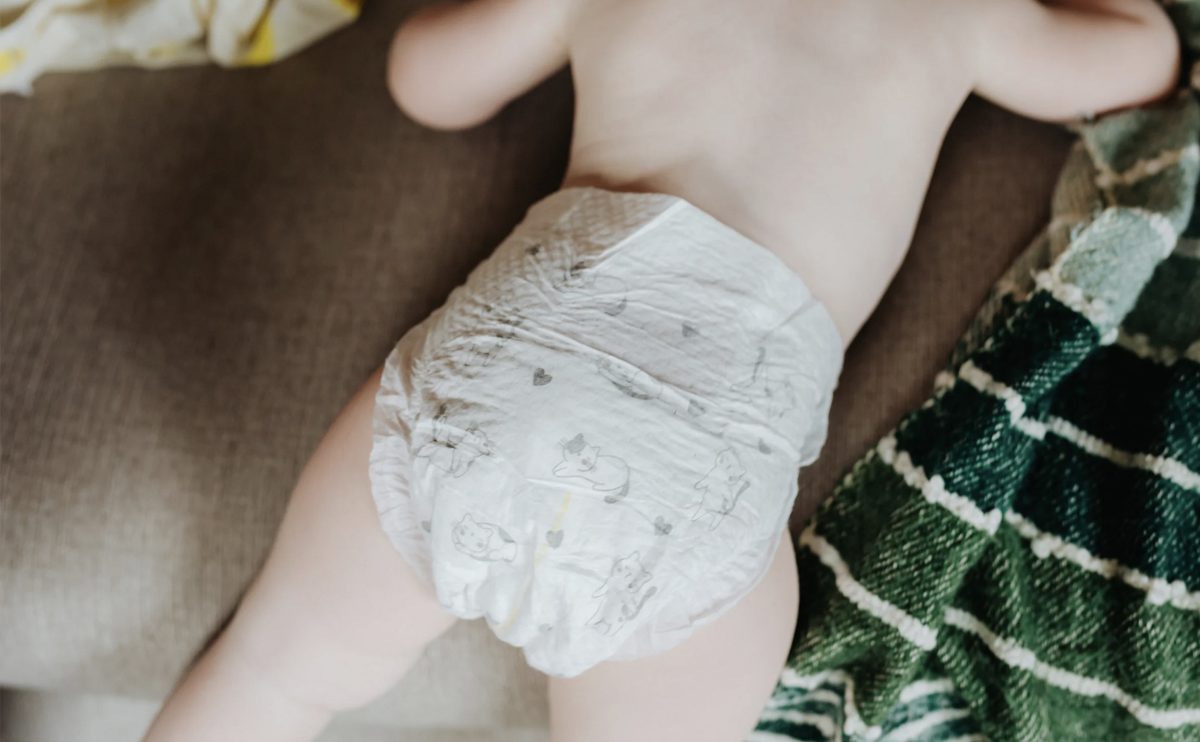When do you know that the toddler is ready to be weaned from diapers? How do you repay? And what are the secrets to success in the process? Instructions
How do you know the baby is ready to be weaned from cats?
He is offered to use the potty or the toilet and his reactions and behavior are examined.
How long does the detox process take?
The basic process – from sitting on the pot to successfully using it – may take about six weeks.
An important rule for the success of rehab: children learn better when they are rewarded for their successes and progress than if they are punished for their mistakes.
Many parents are impatiently waiting for the stage of weaning from diapers, both for economic reasons (saving expensive diapers) and for convenience reasons, but from the toddler’s point of view, it is a complex process that combines physiological maturity with a psychological process.
When is the toddler ready to wean from diapers?
The time of weaning is very individual, but from the age of two, the baby has a physiological and cognitive ability that allows him to wean. Before that, he must go through various stages of development that will prepare him for the task:
0-12 months – in this period of time the baby experiences cognitive and linguistic development, at the end of which he is able to link cause and effect. From an emotional point of view, he develops the ability to enjoy compliments and praise. At this age, the baby does not have the ability to control the clasps.
12-18 months – in this period of time, the ability to associate a feeling of fullness in the stomach with the emptying of the bowel begins to develop. From the emotional-social point of view, the toddler’s desire to imitate the behaviors of other children increases. He is able to communicate using a few words and enjoys completing tasks on his own.
18-24 months – in this period of time the ability to control the sphincter muscles develops for a short time, and the toddler is able to sit stable for a long time.
Cognitively, he develops the ability to imagine a target like a “pot” and remember it over time. At the same time, his verbal ability is developing. From the emotional-social point of view, he develops self-control and develops the desire to please his parents in order to receive positive reinforcement from them (compliments and praise).
24-36 months – the toddler already has the physical ability to control the braces, and is (partially) able to dress himself – for example taking off and putting on pants. In the area of language and cognition, he is able to understand verbal explanations.
The memory and imagination that develop at this stage help the toddler to succeed in the weaning task through imaginative games and role plays. The toddler really enjoys the ability to do things by himself. He is aware of his gender and is able to imitate the toilet-emptying actions of the parent of the same sex.
Age 3 and older – the functions of the digestive system are sufficiently developed so that the toddler has more control over the actions of emptying and fewer “accidents” of losing control over the sphincters.
From the cognitive point of view, at the age of 3 and above, a toddler should be able to stop concentrating on the game in order to go to the bathroom and vacate and avoid the distraction until the “task” in the bathroom is completed. At this age, there is a “social urge” to use the toilet, and the toddler enjoys receiving rewards for success in the task.
How do you know if the toddler is ready for weaning from diapers?
Offer him to use the potty or the toilet and examine his behavior and reactions to it. If he shows interest, curiosity, talks about using the potty, and expresses pleasure from sitting on the potty – you can assume that he is indeed emotionally ripe for the process. If the child rejects the idea and expresses opposition with words or cries when you talk about using the potty – he is probably expressing an internal conflict, and you will have to wait a little longer for the appropriate time.
How is the detoxification process actually done?
• Have a preliminary conversation with the kindergarten teacher and/or the caregiver and agree together on the beginning of the process.
• Purchase a suitable book dealing with the subject and read it to your child.
• Play with the toddler in appropriate pretend games such as a doll sitting on a potty.
• Stock up on new underwear your child will love.
• Buy a potty or a potty (you can share the choice of the potty with the toddler) and put it in the toilet.
• Start the process at home while you are there and can support the toddler.
• Change the diaper to underwear for a short and limited time of about two hours. During the two hours, remind your child every 30-40 minutes to go to the bathroom. Expect mistakes and respond with understanding and positive reinforcement.
• After a few days when you see that the toddler is making progress and cooperating, talk to the kindergarten teacher again and continue the process in the kindergarten as well. Initially, you can continue to bring the child to the kindergarten with a diaper, and the staff at the kindergarten will take it off for him so that he remains in his underwear for a short and limited time that is agreed in advance. Later, with the progress of the toddler and his successes in the process, he will very proudly say goodbye to the diaper – permanently.
How can you help a toddler wean successfully from diapers?
Support
Children learn better through receiving rewards for their successes and progress than through punishments for their errors. The parent has an important role in the success of the process of weaning from diapers – a process that is sometimes slow and gradual.
Is the toddler doing well? Give him a hug, words of encouragement, and even a small prize.
Did the toddler fail? Tell him you’re sure he’ll do better next time and offer him help wiping and cleaning up after each failure.
For example: “Come, I’ll help you clean up and get dressed, and I’m sure you’ll do better next time.” You can give a small reward for each success, but you must avoid punishment and expressing disappointment following a failure.
The consistency of
the parent’s system of expectations from the toddler should be logical and consistent and adjusted to the toddler’s abilities. You can expect the toddler to at least try to perform the action every time and repeat things in simple words.
It is best to be as consistent as possible in the routine of going to the bathroom: the potty/buttock should be placed in the same place all the time, and the wiping and washing of hands should be done every time in a routine manner.
It is recommended to harness the entire care team of the toddler to the weaning task in order to maintain uniformity and avoid creating confusion and uncertainty in the toddler.
Involvement and Supervision
Toddlers’ needs, behaviors, and abilities are not always predictable and often change. Sometimes a detox process that started well will not succeed on a certain day. This is not a reason to despair. You must continue the weaning process as you started it, be attentive to the toddler’s needs, and support him according to the difficulties that arise.
Enjoying
weaning from diapers is a natural process, and you should see it as a fun activity. Don’t be stressed by the difficulties that arise and help your child learn the new skill in a way that strengthens his self-confidence and self-esteem.
Remember: every toddler learns to use the toilet sooner or later, and your child will too. Try to enjoy the magic and funny moments in the process, and it will be easier for all of you.
The toddler
will really enjoy playing with materials that symbolize secretions and give him the possibility of emotional expression. It means playing with dough and plasticine, hand paints, clay, sand, mud, or papier mache.
The toddler should be allowed to get dirty with pleasure while playing so that it will be an alternative occupation for him to contact with the feces. Such a game may help him overcome the difficulty of releasing the ports and parting with them.
How long does the process of weaning from diapers take?
The answer is not unequivocal. If the toddler is ripe for the weaning process from the physiological, cognitive, and emotional point of view, the basic process – from sitting on the potty to successfully using it – may last about six weeks. However, even after this period, there may be “accidents” and misses until full weaning.
What do you wean first – pee or poop?
Usually, the toddler learns faster to urinate in the potty. Pottying is a skill that takes more time to learn. It is more difficult for a toddler to say goodbye to feces because he sees it as part of his body. It should be known that the weaning process is not technical, rather it is a significant physical experience for the toddler.
At this age, the toddler develops his independence and privacy. The sense of control over the process is important for a toddler because he sees feces as a part of his body that he must part with. Attempts by the parents to put pressure on the toddler may spur him into reluctant and rebellious behavior manifested by stopping the stool. This is how the toddler actually expresses his control over what belongs to him.
The child’s difficulties in defecating must be treated gently, and he must be allowed to do so at his own pace. Constipation will cause a toddler a lot of suffering, and it must be treated quickly by contacting a doctor.
If the toddler wants to continue pooping in the diaper even though he is already peeing in the potty, he should be allowed to do so. After the toddler pooped in the diaper, you should go to the bathroom with him, show him the “product” and give him a chance to say goodbye to it in the toilet.
Is weaning during the day faster than weaning at night?
Mostly yes. The toddler may be completely weaned from diapers during the day, but will still need a diaper at night. If the toddler is weaned from diapers during the day and for about a week gets up in the morning with a dry diaper – you should offer him to say goodbye to the diaper at night as well.
summer or winter?
In principle, the season in which the process of weaning from diapers takes place has no meaning, but only the maturity and readiness of the toddler. However, it is easier to reward in the spring and summer months, because there are no layers of clothes, and it is easier to undress and dress. Of course, if the toddler expresses a desire to wean in the winter – there is no reason to postpone the process.












Add Comment